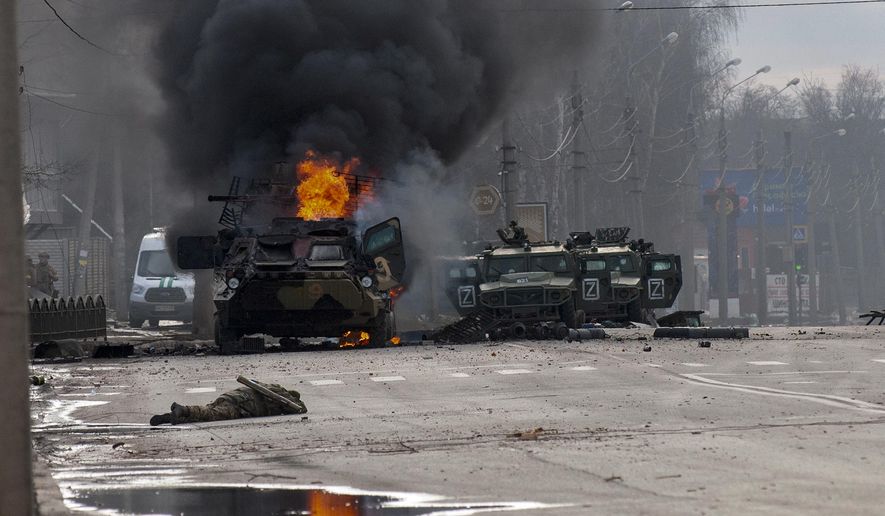Russia has poured nearly 75% of the combat power it assembled across its border into Ukraine, but Russian military advance remained bogged down Monday by a stiffer-than-expected resistance and what military experts say are some self-inflicted strategic wounds.
On Monday, the fifth day since President Vladimir Putin ordered his tanks and troops into Ukraine, heavy fighting was continuing around Kharkiv, a city in the northeast section of the country. Russian commanders have targeted the city, along with the port of Mariupol, in a bid to slice off the eastern part of Ukraine from the central government in Kyiv, a senior Defense Department official said.
But a separate offensive targeting the capital is also making only slow progress, despite the manpower and firepower advantage enjoyed by the Russian forces.
“We estimate that the Russian main advance on Kyiv remains slowed,” the Defense Department official told reporters. “Their advance on Kyiv still appears to be their main line of effort. We expect that they’re going to want to continue to move forward and try to encircle the city in the coming days. They are not there yet.”
Western military experts say they are surprised that, almost a week into the war, Russia has yet to achieve air dominance in the skies over Ukraine. Pentagon officials said the Ukrainians have been able to keep a credible air and missile force flying even after five days of heavy fighting. Ukrainian videos show heavy damage to Russian tanks and armored vehicles and Ukraine has also employed Turkish-made drones to harry Russian columns of troops as they advance.
“The airspace is contested. The Russians have not been able to dominate the airspace,” the Defense Department official said.
Pentagon officials are also expressing caution about anecdotal reports that Belarusian and Chechen troops have entered Ukraine and are fighting on behalf of Moscow. “Our best information is that the forces inside Ukraine are all Russian,” the U.S. official said, even though at least part of the Russian offensive crossed into Ukraine from neighboring Belarus.
Russian military leaders appear to be having problems keeping their tanks topped off with fuel, suggesting they didn’t adequately prepare for an extended massed ground invasion or their execution of a logistics plan was flawed. Intelligence indicates they had to dip into their supplies earlier than they had intended, officials said.
“They’re running out of gas and they’re having logistics problems. Our assessment was that they did not believe that they would be having those kinds of problems that early on,” the U.S. official said.
If the advance into Ukraine continues to be stymied by a more robust defense than Moscow was expecting, the invading army may pause and readjust their basic plan of attack, Pentagon officials said.
“It’s possible that they could change their plans in how they want to go after Kyiv — to be less discriminate than they have been thus far,” the Defense Department official said.
Analysts say Ukraine still faces a monumental challenge in holding off the larger Russian invading force and that Russian commanders can be expected to learn from the campaign’s early reverses and adjust their strategy in the coming days.
• Mike Glenn can be reached at mglenn@washingtontimes.com.




Please read our comment policy before commenting.